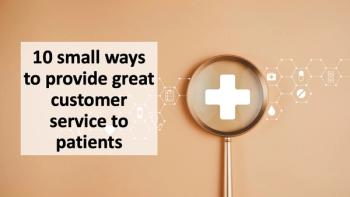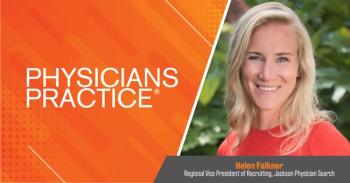
What over 2 million patients say about their healthcare experiences
This assessment identified four core areas that generated underwhelming scores.
The year 2023 was full of changes in healthcare. After a long period of sinking margins, hospital revenues began to stabilize. Once feared, artificial intelligence began to show signs of acceptance within the industry. And hospitals made progress on reducing inpatient infection rates.
However, last year also saw a continuation of some troubling trends — one of which was a
Effectively addressing this troubling trend starts with understanding why patients are reporting
Cost of care and billing
Patient experience measurements that received the most subpar ratings in 2023 were related to cost of care and
When we dove deeper into patient comments about why they had such a poor experience with the cost of their care and billing, a few themes emerged. Individuals felt they lacked the proper information about their bills to understand what they owed. Some experienced anxiety, as they didn't know if their insurance would cover their care needs. Others reported encountering errors with their slide scale payment arrangements and friction when trying to reach someone to fix these issues.
In truth, high costs of healthcare and confusing payment systems have been sticking points for quite some time.
Our data show that patients across demographics encounter similar obstacles and confusion. But physician practices, ambulatory surgery centers (ASCs), critical access hospitals, hospitals and health systems, and community health/federally qualified health centers (FQHCs) generated the most subpar scores among all organizations. Ultimately, patients want thorough and clear guidance about what they need to pay and what their insurance will cover. Without this communication, individuals are likely to remain anxious and frustrated.
Care team communication
The next core where patients gave providers subpar ratings concerned the delivery of information about prescriptions, pain management, and discharge guidelines. There were a variety of reported reasons for such underwhelming ratings. These included being provided with insufficient information and the inability to ask questions, having too little time to be properly educated during visits, feeling pain concerns were dismissed by doctors, distrusting staff, and receiving ineffective treatments.
Miscommunication has serious effects in healthcare. Poor communication has long been recognized as a barrier to patient safety, with The Joint Commission acknowledging the risks when it established a National Patient Safety Goal that addressed hand-off communication errors and then
As for pain management, care teams have grappled with this issue for a while. Some doctors are hesitant to over-prescribe possibly addictive pain medications. Coupled with factors like unconscious bias, this has led to frequently reported dismissal of serious pain among patients.
Low scores in these areas swept across many different organizations, including physician practices/ASCs, critical access hospitals, children's hospitals, community health/FQHCs, hospitals and health systems, and behavioral health providers. This indicates fixing these issues will likely require industry-wide efforts to improve communication. Such efforts will need to include slowing down when communicating with patients, providers spending more time listening to patients, and allocating time for patient questions, as well as giving individuals convenient communication channels for expressing concerns or getting more information outside of the four walls of the provider organization.
Access to care and wait times
Access to care and wait times also took a top spot among the top patient experience challenges in 2023. Survey participants commonly cited obstacles to easily scheduling appointments, getting stuck on phone holds, having to wait extended periods for doctor visits, and facing difficulty getting a parking spot or finding transportation to the provider organization.
The patient voices themselves paint a clear picture of what these issues can look like in reality. One individual reported arriving early as instructed by their provider, only to see a doctor 20 minutes after their scheduled time — without any communication about the delay. Another found few slots available that would work with their busy schedule, while someone else needed to book a visit just to determine eligibility to secure an appointment with a clinician.
There's no question access to care continues to threaten the well-being of our communities. Last year saw the closing of
Patients reported outstandingly low scores for measurements related to access and wait times across the board and particularly for home health providers, hospitals and health systems, critical access hospitals, community health/FQHCs, and imaging centers. This indicates all organizations have opportunities to actively work on removing obstacles to care and streamlining appointment scheduling to enhance the patient experience.
Missed expectations of care
Related to communication, patients reported a lack of meeting expectations when engaging with care teams, front-of-office personnel, and their providers at large.
Individuals cited feeling rushed by their physicians, interrupted during discussions, and ignored by reception staff as key contributors to low scores. They also reported a lack of empathy from doctors and, at the organization level, respondents — especially those identifying as female — expressed frustration about amenities offered at facilities, giving food options particularly low ratings.
This consistent trend speaks to broader, evolving patient expectations of care and the challenges organizations face when striving to satisfy them. Individuals want convenient and consistent communication with their providers, and generally despise feeling rushed. However, it's important to note
Our data show organizations across the care continuum missed the mark on patient expectations. Providers everywhere must prioritize simplifying communication channels with patients, supporting their care teams to improve engagement, and recommitting to reinforcing empathy with their clinicians to ensure every patient experiences compassionate, connected care.
A path toward progress
These issues should concern any healthcare leader. But it's not all doom and gloom. There are some concrete strategies organizations can implement. And they all start with data. We recommend incorporating robust segmentation strategies to dig deep into your demographic information to assess the exact challenges your patient populations are facing and identify the best opportunities for improvement.
Grouping advanced analytics with digital communication channels, healthcare facilities can support more streamlined and personable patient experiences. And, importantly, arming your care teams with real-time insights to intervene effectively right when they need to will be critical for making progress with the patient experience across enterprises. Investing in enhancing the patient experience should lead to improvements in all areas of your organization — providing evidence for the aphorism "a rising tide truly lifts all boats."
Deb Woods is the chief operating officer at
Newsletter
Optimize your practice with the Physicians Practice newsletter, offering management pearls, leadership tips, and business strategies tailored for practice administrators and physicians of any specialty.








